It is believed that the division of stones into precious and semi-precious is rather arbitrary. The value is usually determined by how common such stones are, what is the refraction, transparency. However, in general, their classification is a rather subjective thing.
The use of semi-precious stones, the most famous examples
Semi-precious stones are often found in nature and are very widely used in jewelry. The most famous stones to mankind have ancient history, myths and legends are associated with them.
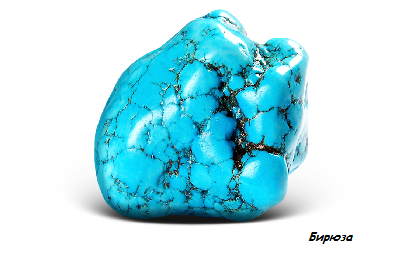
Thus, semiprecious stones- have been known to mankind for quite a long time, which appreciates, first of all, their beauty. It is worth saying that according to the official classification, rare stones are:
- Diamond;
- Blue sapphire;
- Emerald;
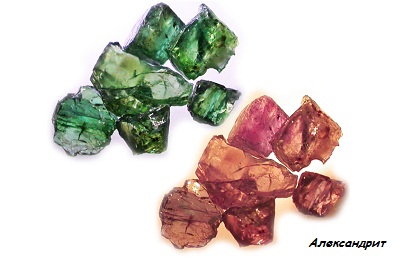

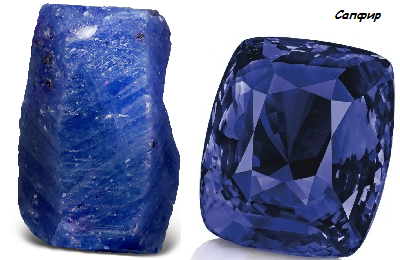
The rest of the minerals are considered semiprecious, valued by buyers (in addition to their low, in contrast to diamonds, value) for their color.
Mineral and character of a person, which stone is better to choose?
When choosing jewelry, many people are guided not only by their own sense of taste, but also, for example, by a horoscope - since astrologers believe that stones can positively or negatively affect a person of a certain date of birth.
In the photo - aquamarine, famous for its unusual color, which the mineral resembles the color of sea waves. The name is derived from the Latin words "aqua" - moisture and "marinus" - sea. This mineral serves as an amulet for travelers due to its similarity to sea water.
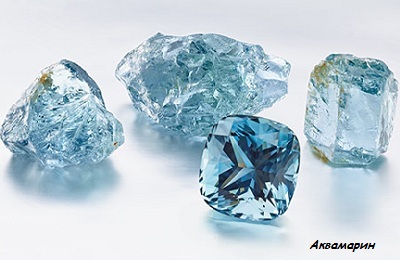 It is advised to wear it in rings, pendants, beads, and also in earrings. The healing properties of the mineral have been known from time immemorial. It was used by ancient doctors to heal the kidneys, liver, thyroid gland and toothache. It is believed to maintain the correct balance of sodium and potassium salts in the body. In Tibetan medicine, aquamarine is considered a good remedy for relieving tension and gaining balance.
It is advised to wear it in rings, pendants, beads, and also in earrings. The healing properties of the mineral have been known from time immemorial. It was used by ancient doctors to heal the kidneys, liver, thyroid gland and toothache. It is believed to maintain the correct balance of sodium and potassium salts in the body. In Tibetan medicine, aquamarine is considered a good remedy for relieving tension and gaining balance.
The photo shows ametrine, the name emphasizes the duality of the stone, as it is a combination of the minerals amethyst and citrine, in color - wine yellow, lilac, lilac. There are also pale orange, peach, purple specimens. The stone is considered the patron saint of clairvoyance and clairaudience, bestowing superpowers.
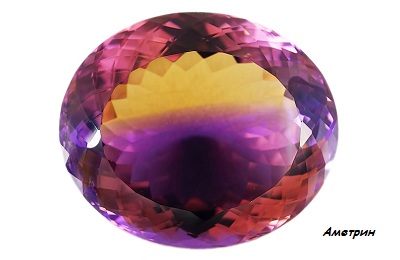 The mineral has a positive effect on health:
The mineral has a positive effect on health:
- increases vitality;
- gives strength and vigor;
- improves sleep;
- helps with depression, excessive melancholy or apathy.
Knowledgeable people advise wearing a gem in the form of pendants or beads, earrings or a ring, since in this form it enhances the effect of medicines and cleanses the blood of harmful toxins.
Ametrine acts as a talisman of a person who is able to smooth out conflicts, reduces the risk of women being subjected to violence, fights against irascibility, enhances in the owner such traits as prudence, poise, benevolence and gentleness in communication.
In the photo you can see stones of a blue, sapphire or even purple hue. Because of its color, benitoite is associated with space. It is believed that the stone supposedly absorbs the highest cosmic energy and opens the owner's consciousness for its acceptance.
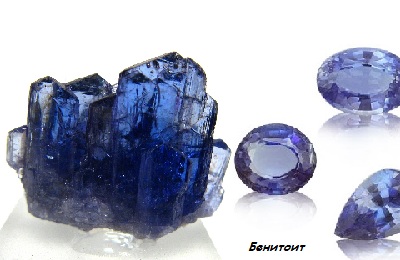 It is also believed that benitoite contributes to the acceleration of recovery, therefore it is used as a talisman for seriously ill patients or those who have had an illness. The mineral has a positive effect on the immune system, improves metabolism. The stone favors vain people, it should be worn by those who crave fame or want to achieve great success in their careers.
It is also believed that benitoite contributes to the acceleration of recovery, therefore it is used as a talisman for seriously ill patients or those who have had an illness. The mineral has a positive effect on the immune system, improves metabolism. The stone favors vain people, it should be worn by those who crave fame or want to achieve great success in their careers.
Benitoite also heals unhappy hearts, assists in finding love, meeting your soulmate. Astrology shows that almost all signs of the Zodiac are wearing this semi-precious gem, except for the Fiery ones - Sagittarius, Leo and Aries. Since the representatives of these signs are already overly vain, arrogant and proud.
In the photo we see a semi-precious stone without color, slightly yellowish, even matte. In nature, berillonite is very rare - deposits have been found only in the USA, Finland and Africa.
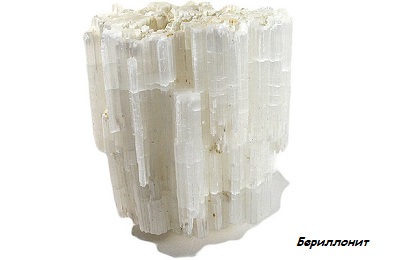 It turns out that this mineral has a beneficial effect on nervous system, saves from hypochondria and blues, relieves stress and helps people whose work is unnecessarily dangerous, since it perfectly calms the nervous system. Berillonite, according to magic reference books, is a stone of amusements, pleasant changes, festivities.
It turns out that this mineral has a beneficial effect on nervous system, saves from hypochondria and blues, relieves stress and helps people whose work is unnecessarily dangerous, since it perfectly calms the nervous system. Berillonite, according to magic reference books, is a stone of amusements, pleasant changes, festivities.
By pulling the owner out of depression, the mineral will make him have fun. At the same time, it is impossible to wear berillonite, for those who are married, since a pebble is able to bring discord into harmonious relationship, lead to casual sexual intercourse on the side.
The owner of the gem can become overly frivolous, reaching out to parties. That is why it is better to know when to stop when dealing with this mineral.
Most of all, the stone is suitable for the zodiacal representatives of the Earth, since it liberates them, endows them with eloquence and hospitality.
The photo shows a yellowish semi-precious mineral, a kind of beryl.
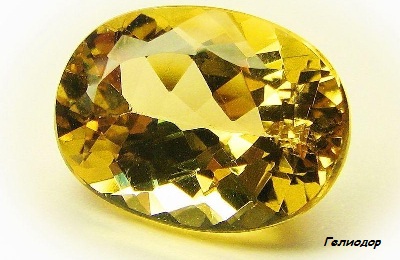 Gelidor is recommended for fearful people. It sets up the owner for a positive experience. As a talisman, yellowish beryl protects on long journeys.
Gelidor is recommended for fearful people. It sets up the owner for a positive experience. As a talisman, yellowish beryl protects on long journeys.
If you hold it in your hands for a while, you will soon be able to feel the powerful energy of heat. If worn continuously, heliodor will manifest its own magical characteristics. He is able to suspend time and prolong external changes in time.
The name is associated with the similarity of the grains of the stone with the grains of the fruit of the same name. In the photo, you can see that the color of the pomegranate can vary from dark reddish to yellow.
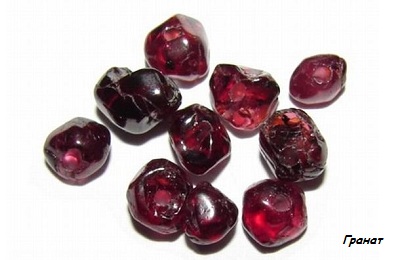 Pomegranate is an amulet for all lovers, therefore it is customary for lovers to exchange red gems. Often people give them as a confirmation of friendship. The gem guarantees the owner a good mood.
Pomegranate is an amulet for all lovers, therefore it is customary for lovers to exchange red gems. Often people give them as a confirmation of friendship. The gem guarantees the owner a good mood.
The pomegranate perfectly accumulates energy, however, it is charged only for powerful deepest feelings, quick impressions do not catch it in any way. Recommended to wear for inflammatory diseases, high fever, inflammation of the larynx and migraines. A greenish pomegranate helps to nurture discernment and foreshadow things to come.
This mineral will only work for a passionate and emotional person.
Crimson pomegranate helps a self-confident person who owns deep and pure experiences.
In the photo we see a yellowish-greenish gem, the name of which comes from two ancient greek words and is translated as "golden stone". The magical characteristics of chrysolite have been famous for centuries.
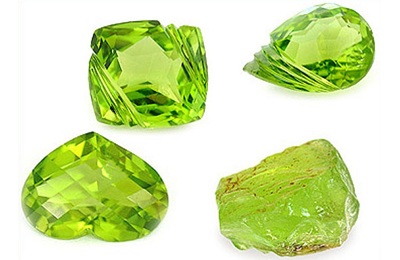 Decorative ornaments with this stone, most often - rings, were worn by famous astronomers and clairvoyants, since it was believed that chrysolite opens the highest ability - to foreshadow the future. Mineral cures stuttering, eliminates nightmares and induces a peaceful sleep. Chrysolite is also a talisman for irritable and inclined to various adventures of people, warning them against the most frivolous and dangerous actions.
Decorative ornaments with this stone, most often - rings, were worn by famous astronomers and clairvoyants, since it was believed that chrysolite opens the highest ability - to foreshadow the future. Mineral cures stuttering, eliminates nightmares and induces a peaceful sleep. Chrysolite is also a talisman for irritable and inclined to various adventures of people, warning them against the most frivolous and dangerous actions.
The name of the stone means "golden leek". The photo shows a translucent green stone.
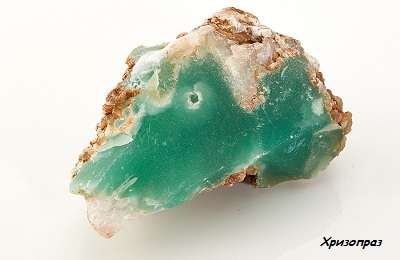 Chrysoprase is an amulet of inventors and innovators. This mineral is recommended to be worn by young people, as it is believed that it is able to help to understand their purpose, to realize themselves in life. It is better not to choose chrysoprase with different inclusions, it is believed that it can bring more harm to its owner than good. Transparent or translucent stones are recommended as a talisman against the evil eye and damage, envious people and reservations.
Chrysoprase is an amulet of inventors and innovators. This mineral is recommended to be worn by young people, as it is believed that it is able to help to understand their purpose, to realize themselves in life. It is better not to choose chrysoprase with different inclusions, it is believed that it can bring more harm to its owner than good. Transparent or translucent stones are recommended as a talisman against the evil eye and damage, envious people and reservations.
Tsavorite
A rare transparent garnet of a bright green color. Specialists in magical properties minerals believe that the greenish color of tsavorite fills the soul with tranquility, the heart with sincere kindness.
It is a good home amulet, mineral - "pacifier" and "absorber" of family incidents.
The gem stabilizes blood pressure, improves the condition of weather-dependent people during magnetic storms.
Precious (jewelry) stones - types, properties, processing
Stones are natural and synthetic.
Natural stones can be of mineral or organic origin.
In jewelry practice and in trade, stones are classified into precious, semi-precious and ornamental.
TO precious stones include stones of mineral origin - very hard, transparent: diamonds, emeralds, rubies, sapphires; organic origin - pearls.
For precious stones the weight unit is a carat equal to 0.2 g, and for all other stones - a gram.
Diamond- the hardest stone; a cut diamond is called a diamond. Depending on the number of defects, diamonds are divided into 8 groups, the most valuable diamonds " pure water».
Emerald(from the Greek "smaragdos" - hard) - a fragile stone of grassy green color.
Ruby(from the Latin “rudech” - red) is a kind of red corundum mineral.
Sapphire(from the Greek "sapphieros" - blue) - a transparent variety of corundum of various colors - from dark blue to pale blue. Natural sapphire is considered a rare gem, although it is valued less than ruby.
Pearl- a precious stone of organic origin, formed in the shells of sea and river molluscs. Pearl color is from white to black. The larger the pearl grain, the higher its value.
Semiprecious stones.
Semi-precious stones are transparent, colorless or colored stones. The unit of mass for semi-precious stones is the gram. Semiprecious stones include:
Siaexandrite- under different lighting conditions, it changes color from dense green to crimson red;
Chrysolite - transparent mineral from yellowish-green to deep green, the stone is rather rare;
Turquoise(from Persian, "firyuza" - a stone of happiness) - an opaque mineral of sky-blue color, goes well with silver;
Garnet- solid, can be transparent, translucent and opaque, reddish shades (more than 30). Pomegranate is used both as a base and as inserts for jewelry (bracelets, beads, necklaces, etc.);
Topaz- the stone is heavy, hard, transparent, mostly yellowish, but there are also other shades.
Semiprecious stones also include spinel, amethyst, aquamarine, beryl, tourmaline, zircon, hyacinth, opal, moonstone, rock crystal, smoky quartz and stones of organic origin - amber, coral.
Amber is a fossil resin conifers tertiary period. Transparent amber with inclusions of insects and plant particles is prized. Amber is used to make beads, brooches, earrings, bracelets, etc.
Coral is a calcareous mass of skeletons of invertebrate marine animals. Coral comes in pink-white, white and reddish hues. Coral is a valuable material for making earrings, necklaces, beads, jewelry inserts.
Ornamental stones.
Ornamental stones are opaque minerals or slightly translucent, inferior in hardness to semi-precious stones. Ornamental stones have beautiful patterns and colors, therefore they are widely used in the jewelry industry.
Chalcedony- solid ornamental stone, grayish-blue color. There are many varieties of chalcedony.
Carnelian - a kind of reddish chalcedony (quartz group).
Agate- is of volcanic origin, it is a multicolored-patterned variety of chalcedony.
Onyx - a variety of multi-colored agate, the ancient Greeks and Romans used to carve cameos and amulets.
Cat's eye - agate variety different shades; cut in cabochon when moving, the stone gives an ebb and play, reminiscent of a cat's eye.
Jasper it can be of a very varied color of various shades, more often it is painted in brick-red or brown color. Jasper is used as a facing, decorative material for columns, lamps, etc.
Malachite- an opaque mineral containing up to 57% copper, has a green color of various shades. Malachite is a stone of medium hardness; it has a complex beautiful pattern on the cut.
In the production of jewelry, artificial stones are used - crystals. Some of them are called synthetic.
Synthetic emerald has the characteristic features of a natural gem.
Cubic zirconia - got its name from the first four initial letters of the name of the institute where it was created (Physics Institute of the Academy of Sciences of the USSR). The starting material for cubic zirconia is mainly zirconium and hafnium oxide.
Various decorative and ornamental materials are used in the production of jewelry: glass, bone, horn, papier-mâché, plastics, etc.
General classification of gemstones
For natural gemstones, there are many different classifications, since specialists in various fields distinguish mainly those characteristics of stones that are most convenient for carrying out a particular activity.
The classification of mineral raw materials can be carried out according to the following criteria: origin, chemical composition, crystallographic parameters of the crystal lattice structure, size, etc.
The classification of cut jewelry stones can also be carried out according to various insubordinate characteristics: crystallographic characteristics, physical properties, cost, medicinal properties(in Europe, eastern and western stones), purpose (for jewelry and products), processing methods, etc.
The first scientifically based classification of gemstones was proposed by the German scientist K. Kluge (1860), who shared jewelry stones into two groups and five classes: truly precious and semi-precious stones. In the first group he classified stones of I, II and III classes, in the second - IV and V classes.
First group
Class I: diamond, corundum, chrysoberyl, spinel.
Class II: zircon, beryl, topaz, tourmaline, garnet, noble opal.
III class: cordierite, vesuvian, chrysolite, axinite, kpanite, staurolite, andalusite, xpastolite, epidote, turquoise.
Second group
IV class: quartz, chalcedony, feldspars, obsidian, lapis lazuli, diopside, fluorite, amber.
Class V: jadeite, jade, serpentine, agalmatolite, satin spar, marble, selenite, alabaster, malachite, pyrite, rhodochrosite, hematite.
In 1896 M. Bauer proposed a new classification of gemstones, which was popular among jewelers and gemologists. In Soviet times, M. Bauer's classification was reviewed and supplemented by Academician A.E. Fersman (table). The classification of M. Bauer - AE Fersman was used for a long time both in the USSR and abroad. All gemstones have been categorized into gems, colored semi-precious stones and organic gemstones. The first two groups, in turn, are divided into three subgroups, which in the classification of these authors are called "order".
A gem is a rare natural mineral formation with unusual beauty and high strength. More than four thousand minerals are known in nature, but only a few can be considered precious. The most important attribute of a gemstone is its beauty: attractive color, shine, "play", rare optical effects (for example, the effect of color change in alexandrite). It is very important that the stones used in jewelry have a sufficiently high strength and hardness and retain their qualities for a long time. It is thanks to their durability that precious stones are used as heirlooms and are inherited from generation to generation. An equally important attribute of a gem is its rarity - the less common it is, the higher its value and vice versa.
Gem science divides stones into two types: inorganic and organic.
Inorganic gemstones are durable minerals of natural origin with a constant chemical structure. Most of the precious stones are inorganic, but of the thousands of minerals extracted from the bowels of our planet, only about twenty have been awarded the high name "gem" - for their rarity, beauty, durability and strength.
Organic gemstones - created by animals or plants, for example, amber is fossilized tree resin and pearls mature in shellfish shells. Other examples include coral, agate, and tortoise shells. The bones and teeth of terrestrial and marine animals were processed and used as material for making brooches, necklaces and figurines.
In Russia, in accordance with Federal law dated March 26, 1998 No. 41-FZ "On precious metals and precious stones", precious stones are natural diamonds, emeralds, rubies, sapphires and alexandrites, as well as natural pearls in raw (natural) and processed form and unique amber formations.
What properties distinguish precious stones from the total mass of rocks and minerals? And why are they, unlike others, so highly valued? There is no doubt that the most important property of these stones is beauty, because without it, a mineral or breed will not be so highly valued, no matter what qualities they have, because precious stones should delight the eye with a bright color, often enhanced by skillful cutting or mysterious design. , beautiful inclusions or other features that make them incomparable with ordinary stones.
Gem color
The color of a precious stone contributes to the development of certain qualities in a person. Solitude and perfection are emphasized by the adornment with white stones. Such stones develop industriousness and a sense of freedom in a person.
Red stones symbolize energy, passion, movement. Such stones are presented as a gift to stimulate the energy of a person, to strengthen the protective functions of the body. Holders of red stones are able to call a person to frankness.
Orange colored gemstones symbolize beauty, grace, artistry. Decorations made from these stones develop a sense of beauty in a person.
Gemstones in green symbolize the integrity of the individual. The owners of such stones are judicious and patient.
Gems of blue color are symbols logical thinking... These stones contribute to the development of qualities such as intuition and practicality in a person.
Purple gemstones are a symbol of mystery, magic, mysticism.
Purple gems are a symbol of will, thought.
Gemstones of brownish shades symbolize peace, reliability, stability.
Black gemstones symbolize the beginning and the end.
How to insure against the purchase of a fake gemstone?
The Russian jewelry market is only looking for points of contact with the world one. And, of course, we burn ourselves. In some stores, under the guise of aventurine, we are offered: ordinary plastic, under the guise of coral - a shell. Under the self-made pompous name "Black Star" was hidden the mineral hornblende, in one store on the window was a "quartz-diopside" that did not exist at all in nature (you will not find such a name in any reference book). As with us: the plant trusts the supplier, the shops - the plant, the buyer - the sellers. As a result, our women have been wearing rings with synthetic stones instead of natural ones for years. By the way, these are the overwhelming majority of gemstones sold in our country.
Why are even specialists "burnt", not to mention the "teapots" who buy jewelry once a year as a gift to their loved ones? The fact is that in the USSR a natural gem was branded as "bourgeois". The names of the precious stones were forbidden to be published. It is no wonder that among commodity experts and sellers of jewelry stores, incompetence thrives all the time. And one can hardly blame them for this: the global approach to assessing the quality of gemstones is just beginning to be applied in Russian spaces.
How can you, without risking, buy a product with a precious stone? It is best - for both a citizen and a legal entity - to spend money on expertise. It's not overly expensive. Well, if you do not want or cannot do this, then follow some simple rules:
- in all stores, there must be information in a conspicuous place about the rights of the buyer and the obligations of the seller of jewelry. Get to know her;
- carefully read the price tag or product label;
- do not hesitate to ask the seller about the quality and characteristics of the stone with maximum meticulousness, and first of all about whether the stone is synthetic or natural. If natural, then whether it was subjected to refinement - exposure (tinting, oil impregnation, heat treatment) in order to hide defects and give a better look;
- most importantly - ask for a sales receipt indicating all the important characteristics of the product. This document will allow you, if necessary, to defend your rights in court.
Large-scale primary markets for precious stones are beginning to take shape - for example, in Moscow and Yakutsk. The "process has begun" especially actively after the government decree of November 25, 1995, which marked the liberalization of this market.
The volume of legal sales of stones is growing, but, according to experts, it is no more than half of the legal one. A lot of "shadow" money can be pulled out into the light, if you seriously start organizing a market mechanism, including banks, exchange structures, investment companies, extraction, processing, trade in stones and jewelry.
For gardeners
website, 2000-2017 - Internet resource about home and family... About indoor plants landscape design, soap making, permaculture, natural farming, about gardens, growing plants and flowers, about natural gems, quality household goods, good books. Personal experience of people living outside the city, reviews and recommendations.
Gem classification
The classification of gemstones dates back to the 19th century. In 1896 M. Bauer developed a classification of precious stones. Later, the Russian academician A.E. Fersman expanded and supplemented it. This classification option is now considered obsolete.
According to this classification, jewelry and semi-precious stones are divided into three groups:
- precious stones (gems),
- ornamental (colored stones),
- organogenic precious stones.
In the first two groups, the stones are divided into orders depending on the value of the stones.
Modern classifications of gemstones
Today, refined and simplified versions of the Bauer-Fersman classification are used.
V.I.Sobolevsky's classification
1. Gems (gems)
Sapphires and rubies.
1 class: diamond, emerald, alexandrite, chrysoberyl, euclase, noble chinel and especially rare varieties of corundum: ruby, sapphire, padparadscha (orange sapphire).
Grade 2: topaz, varieties of beryl (aquamarine, vorobyevite, heliodor), pink and dark red tourmaline (sibirite), phenakite, amethyst, zircon (orange hyacinth, green, etc.), noble opal.
Grade 3: turquoise, rock crystal (colorless and smoky rauchtopaz), chrysoprase, carnelian, agates with beautiful pattern, bloodstone, amber, jet, etc.
2. Colored stones
1 class: malachite, rhodonite, jade, lapis lazuli, amazonite, labradorite, aventurine, chalcedony, written granite, etc.
Grade 2: ophiocalcite, agalmatolite, marble onyx, fluorite, selenite, jasper, sea foam, etc.
Household classification
Ametrine, mystic topaz, cubic zirconia.
Simplified classification (household). Here stones are divided into precious, semi-precious and semi-precious (semi-precious).
Gemstones of the first grade: diamond, sapphire, ruby, chrysoberyl, alexandrite, emerald, lal, spinel, euclase.
Gemstones of the second grade: topaz, aquamarine, beryl, red tourmaline, demantoid, phenakite, blood amethyst, almandine, hyacinth, opal, zircon.
Semiprecious stones: garnet, epidote, dioptase, turquoise, green and variegated tourmalines, pure rock crystal, rauchtopaz, light amethyst, chalcedony, very High Quality solar and moonstone labrador.
Gemstones: jade, lapis lazuli, bloodstone, amazonite, labradorite, varieties of spar and jasper, vesuvman, smoky and rose quartz, jet, amber, corals, mother of pearl.
Classification E. Ya. Kievlenko
Alexandrite.
One of the best recognized classifications is considered the option proposed by Professor E. Ya. Kievlenko. In 1973 he proposed his own system (based on Fersman's classification). The market value of colored stones is taken into account here.
The first group - jewelry (cutting, precious) stones
1 class: diamond, emerald, blue sapphire, ruby.
Grade 2: alexandrite, noble jadeite, orange, yellow, violet and green sapphire, noble black opal.
Grade 3: demantoid, noble spinel, noble white and fire opal, aquamarine, topaz, rhodolite, moonstone (adularia), red tourmaline.
4th grade: blue, green, pink and polychrome tourmaline, noble spodumene (kunzite, hiddenite), zircon, yellow, green, golden and pink beryl, turquoise, chrysolite, amethyst, chrysolite, chrysoprase, pyrope, almandine, citrine.
The second group - ornamental (stone-cutting) stones
1 class: rauchtopaz, hematite (bloodstone), succinite amber, rock crystal, jadeite, jade, lapis lazuli, malachite, aventurine.
Grade 2: agate, colored chalcedony, cacholong, amazonite, rhodonite, heliotrope, rose quartz, iridescent obsidian, ordinary opal, labradorite, belomorite and other opaque iridescent spars.
The third group - decorative facing stones
Jasper, written granite, petrified wood, marble onyx, listvenite, obsidian, jet, jaspilite, selenite, fluorite, aventurine quartzite, agalmatolite, patterned flint, colored marble.
It is hard to imagine that there were times when precious stones were practically worthless, had no name, and were often used for absolutely primitive purposes (for example, they used to chop nuts with them). And all because gems extracted from rocks at the initial stage rarely have a presentable appearance: precious stones are dazzled with paints of amazing beauty only after jewelers have worked on them properly (they will cut them, polish them, create the appropriate design). Immediately after that, the gems become insanely expensive, and no one else rises to use them as a tool of labor.
Precious stones are natural chemical compounds (minerals) that have a crystalline structure and a specific composition that affect the characteristics and appearance of gems.
Since there are more than four thousand names for a wide variety of minerals in nature, experts agree that only a natural crystal that is distinguished by its beauty and strength, and therefore is suitable for jewelry processing, can be considered precious. Moreover, these minerals can be both colorless and have a beautiful monochromatic color, shine, create an amazing play of light and shadow, surprise with unusual optical effects, are characterized by wear resistance, high hardness.
Considering all these interrelated factors, scientists have still not been able to develop a clear and unambiguous scheme for dividing gems into groups (in each country the same stones are often referred to as precious or semi-precious). The main list in many classifications nevertheless coincides: no one doubts that natural rubies, diamonds, sapphires, emeralds, alexandrites and pearls are precious stones. For example, in Russia they are recognized as such at the legislative level, and therefore all other natural gemstones are considered semi-precious.
Among them are garnet, amethyst, topaz, malachite, turquoise, agate, jade, amber: despite the fact that after processing these minerals become transparent and acquire a unique shine, they are not unique and do not have the required hardness. True, this does not prevent jewelers from widely using semi-precious stones in finishing works(malachite boxes, Amber Room in the Catherine Palace).
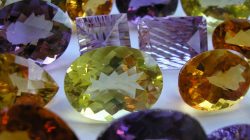
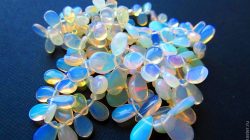
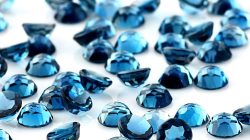
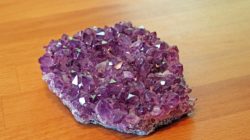



Beauty of gems
Precious stones are primarily characterized by monotony (they can be either colorless or have a specific color). The gem can have both "own" and "foreign" color, which it acquires due to impurities of other minerals that somehow ended up in its composition (for example, semiprecious agate can be yellowish due to the dissemination of hematite and iron hydroxides ).
Also, an important role in evaluating a gem is played by its brilliance (the level of refraction of rays, the ability of the stone to reflect them) and transparency. In addition, the beauty of gems is given by optical effects that are obtained by combining gloss, color and transparency:
- Asterism - light beams radiate from the middle of the gem in different directions. This property can be seen when inclusions of other minerals (ruby, sapphire) are observed along the edges and facets of gems;
- Cat's eye - is obtained due to the presence of pipe-like voids or fibers of other crystals in the structure, giving the gem a silky shine (jade, quartz, chrysoberyl);
- Opalescence is formed as a result of the refraction of rays from the three-dimensional structure of the stone. This property is best expressed in opals, whose colors shimmer and sparkle;
- Irisation - manifests itself in the form of an iridescent color glow in bright light, typical for spar, quartz, moon and sun stones;
- Dispersion - a property that can be seen in minerals with high refraction of light rays (diamond). In these gems, waves of purple and red tones beautifully shimmer as they pass through the crystal.
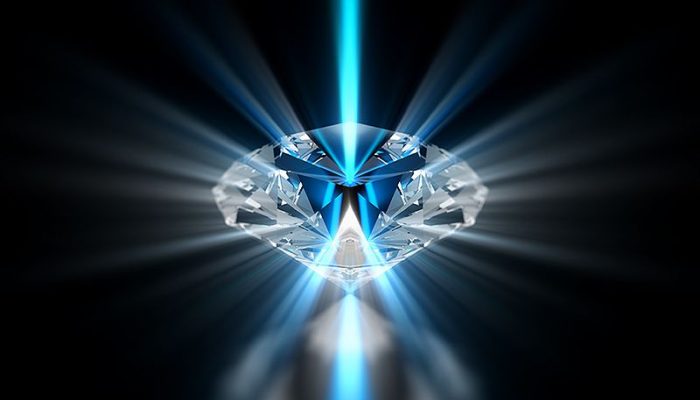
Gem durability
The less durable a stone is, the less valuable it is: when processing a gem for jewelry, it is very important that it can be cut, sawed, polished, etc. without special fears. Thus, according to hardness, gems are divided into the following types:
- Soft (from 1 to 5) - talc, lime spar, marble, onyx;
- Medium (from 5 to 6.5) - apatite, orthoclase;
- Hard (from 6.5 to 7.5) - quartz;
- Highly hard (over 7.5) - topaz, sapphire, diamond.
The quality of precious and semiprecious stones is influenced by such their property as viscosity - the ability to change and restore their shape during the action of deforming forces on them. Gems with high viscosity (jade) easily retain their shape, and you can wear them without fear that they will begin to crumble, as, for example, such fragile semi-precious stones as opal or obsidian can do this.

Also, jewelers appreciate such a property of a stone as cleavage - its ability to break into crystallographic plates (a very necessary property to obtain a flat surface). Meanwhile, if this characteristic is expressed too strongly, jewelers prefer not to associate with a gem: the stone may become covered with cracks and chips.
One of the characteristics of the strength of a gem is its purity or defectiveness - the absence of voids, cracks, impurities. It should be borne in mind that an absolutely pure mineral almost never occurs and always contains traces of the early stages of its development.
Cracks rarely adorn a gem and always reduce its durability - this also applies to expensive diamonds.
Thus, the most expensive gemstone "Cullinan" (the diamond got its name in honor of the owner of the mine where it was discovered) was donated to King Edward VII of Great Britain at the beginning of the twentieth century: it had 3106 carats, its weight exceeded half a kilogram, and its dimensions were 100x65x50 mm. Since there were cracks in the donated diamond, it was impossible to make one large diamond from it, and therefore, before splitting it, the best cutter of that time, Joseph Asher, studied it for several months.
It took some time to break it: the knife broke during the first attempt. But the second approach turned out to be more successful, and Cullinan divided it into two parts (it is interesting that after the first accurate blow, the master lost consciousness from overvoltage). As a result, nine large diamonds and ninety-six small precious stones were made from the stone, the largest of which is inserted into the royal scepter, and the second largest adorns the crown of the British Empire.
The chemical composition of the gem
The appearance of most semi-precious and precious stones depends largely on the chemical composition of the gems. Since they all have different chemical compositions and crystal structures (gem-quality gems almost always have an ordered crystal lattice), they are divided into corresponding groups.
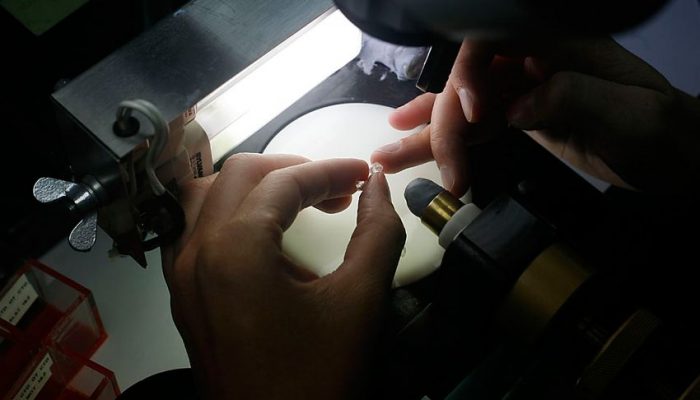
The most common element in the composition of gems is oxygen, and then, in decreasing order, silicon, aluminum and calcium follow (silicates are the most numerous group). In terms of chemical composition, the list of semi-precious and precious stones is as follows:
- Silicates - chrysolite, garnet, beryl zircon, nephrite;
- Oxides - corundum, quartz, opals, spinel;
- Sulfides - pyrite, galena, sphalerite;
- Halides - fluorite;
- Native elements - diamond;
- Carbonates - malachite, marble onyx;
- Organic compounds - amber, corals, pearls, jet.
Interesting that Chemical properties gems of the same group can change with an unchanged crystal structure: stones are able to turn into precious (ruby transforms into pink sapphire) and semiprecious species.
Even the smallest fluctuation in properties can change the appearance of a jewel, for example, ruby and sapphire, being varieties of the corundum mineral and having the same characteristics, have different colors - sapphire blue, ruby red.
As for the gems of organic origin, before acquiring their present appearance, they were an element of living nature: pearls grew in the shell of an oyster, amber is resin, coral is the skeleton of marine invertebrates, jet is a petrified tree.

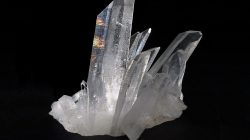




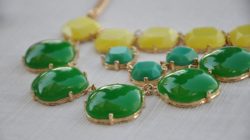
Origin
If earlier it was believed that the most beautiful gem can only form in the tropics, geologists managed to prove the erroneousness of this belief by finding many gems in temperate latitudes. For example, in Russia were found such precious stones as aquamarines, diamonds, jade, topaz, lapis lazuli, in Japan - coral, pearls, amethyst, in Ukraine - beryl, topaz, in Hungary - opal.
Almost all precious stones (of course, except for those that are of organic origin) were formed in rocks, and therefore they are subdivided into metamorphic, igneous and sedimentary (among the latter - rock crystal, garnet, Colombian emeralds). Some precious stones are considered primary (located in the place where they were formed), others - secondary formations (the formed minerals were transferred by rivers, seas or winds to a new place).
The extraction of precious stones largely depends on the origin of the gems. Precious and semiprecious stones located near the earth's surface are often mined by hand (especially in third world countries): stones are separated from the rock with ordinary hammers, chisels, picks, sometimes explosives are used. Placer deposits in water are processed by washing sand or using dredges. But in order to extract stones located at great depths (for example, diamonds), the technique is still involved - you cannot handle it manually.
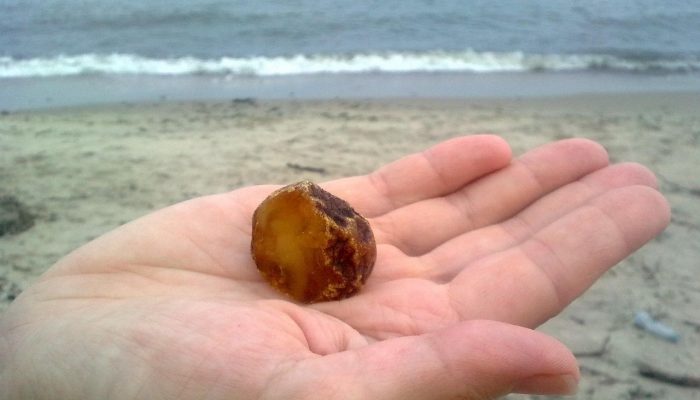
Synthetic stones
Even a hundred years ago, it was quite easy to distinguish a semi-precious or precious stone from their glass imitation or ornamental stone: a jewelry stone could be identified "by eye" and it was not easy to deceive anyone. But, in the middle of the last century, science made a huge leap forward - and the appearance of synthetic stones, which were in no way inferior to natural precious stones, made gems available to the general population.
It is worth noting that if earlier the creation of such stones was very expensive due to the high cost of equipment, then recently the cost for them has been falling every year.
The main difference between these stones and the original ones is that they were not formed inside the rock, but were created artificially in a factory or laboratory. Therefore, they have another name - "grown jewelry stones": quite often there is a complete imitation of the natural process of the formation of a gem (the only thing is that the stone grows much faster).
In building artificial stones there are many positive aspects. First of all, jewelry became more accessible to the general public, therefore, sales and profits increased. Artificial gems are often more perfect than their natural counterparts (they do not have cracks, impurities, they are usually more saturated and deeper in color). Do not forget that in some cases the creation of a synthetic stone is the only way to replace disappearing natural gems with their artificial counterparts.




